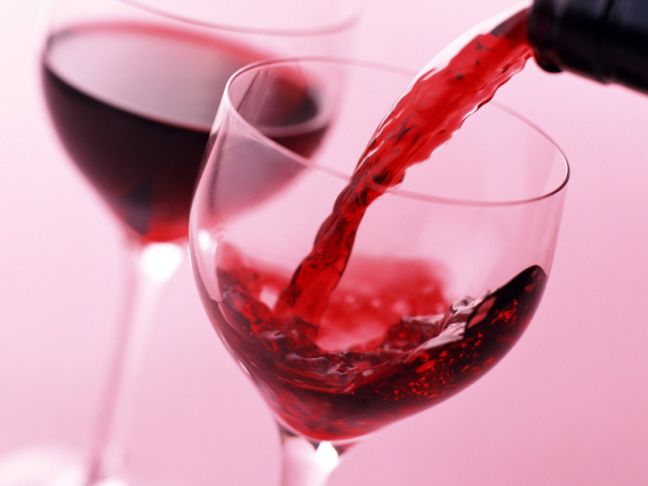MONTALCINO – You know you’re in Brunello country when you see, guarding the meticulously groomed vineyards as they unfold across the famous slanting hills of clay (le crete), rose bushes in bloom at the start of every row of grape vine. Rose bushes? “It’s our tradition,” a proud Tuscan vintner explained. “We’ve always planted them by the grapes.”
This part of Tuscany is particularly elegant. Along with the vines are glowing fields of sunflowers, always with a few rebels refusing to turn their heads to the sun. Above, standing against the skyline like sentinels, are stately s of cypress trees. Their poetry is in the view, but the reason for it is prosaic: the hills are of clay, and the roads tended to be built atop the crest to avoid their simply slipping down from erosion. In the valleys below there are creeks and stands of trees. Some years back I was invited into this bottom land to accompany a truffle hunter and his dog out on a misty autumnal morning. It was an unforgettable experience: the dog found several white truffles, and we were treated to one, served in slivers atop a risotto.
Naturally the accompanying wine was a Brunello. And in case the traveler missed the point, the closer one arrives to Montalcino, the more signs appear inviting the traveler to local producers for a wine tasting. And why not? Among the most prized of red wines anywhere, Brunello, along with the Piedmontese Barolo, is the Italian wine said to age best. It is made exclusively from the Sangiovese grape and harbors its secrets for years in great oak barrels and then in bottles, developing an alcohol content of at least 12%. At least two years have passed before it is drunk. At that time proper decanting is advised, or at least before consumption it must be let “breathe” (that is, let the opened bottle sit quietly a few hours). Finally it is poured into a glass, which the wine connoisseur will hold to the light a moment to see and admire, in the thin layer of glycerine atop the ruby red wine, a miniature rainbow striped in layers of orange and black.
As the rose bushes suggest, whether or not they are really traditional, these are good times for Brunello, but also for all Italian vintners. Lorenzo Delle Vedove, whose vineyards are on the Trentino border north of Verona, told us that the Italian wine cellars are empty. “It’s the first time ever,” he crowed. “No one has any wine left to sell.” Even if he is exaggerating, with 49.6 million hectoliters from the 2010-2011 vintage, the Italians out-produced the French, at 46.2 hectoliters. Indeed, last month the daily Corriere della Sera trumpeted in a headline, “Italy makes history as the world’s foremost wine producer.”
Another first is that exports now earn more than sales at home. Last year total export sales amounted to a stunning Euros 3.93 billion ($5.65 billion) and for the first time exceeded domestic consumption. The trend continues, and by early 2011 export volume showed a record hike of 31% for wine sales from the 2010-2011 vintage to the U.S., Italy’s principal foreign customer. Italian wine exports to other EU countries also rose by 6% while—in a real novelty—sales to China bounced up by 146%. Although sales of bottled wine lagged slightly behind those for bulk, both were up respectively by 26% and 33%. This is all the more impressive because over the same period sales of wine from other EU nations contracted by 3.7%.
Small-scale producers fared particularly well, with an increase this vintage over last year of 16% in earnings. (All statistics are from the Italian association of farm owners Coldiretti and from the European Commission.)
So how do they do it? Quality comes first, but marketing can help. Vintner Patrizia Aglieta of Montalcino, for instance, came up with a first for the Aglieta label’s production of classic Brunello. It happens that her wine label is in the shape of a rugby football, and hearing an Italian chef friend speak of his old sports passion for rugby gave her an idea: a Brunello aimed at rugby enthusiasts. The new production of Brunello is called “Il Terzo Tempo” (The Third Half, meaning for the post-game party). Rugby clubs from Ireland and Wales are snapping up the cases, and the matching T-shirts with the bottle and its rugby ball label.
Obviously marketing won’t work when the product is inferior, but her wine is among the wines of Italy allowed to show on the label the designation DOCG, for Denominazione di Origine Controllato e garantita (Denomination of Origin Controlled and Guaranteed). “To get our DOCG took twenty years altogether,” she says. “First the planting of the vines, and after two years inspectors came to see our vineyards. They approved, but then it took another five years before we were actually producing the wine, and five more after that before we could open the first bottle—ten in all. I was literally terrified that it would taste terrible!” It did not, fortunately—particularly since at the moment no more DOCG authentications are available.




